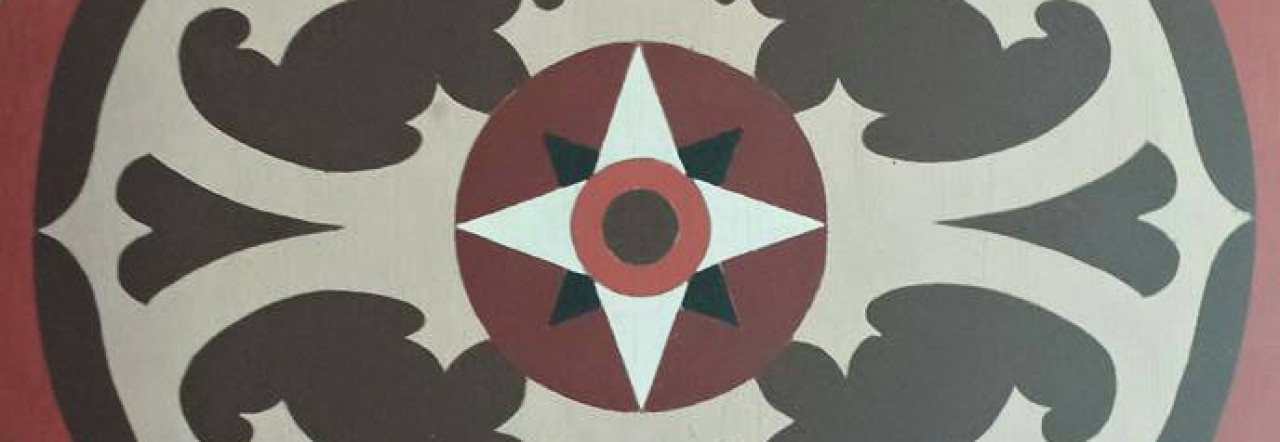A few days ago I had the privilege of finally seeing where my dear friend, Mel Kobayashi, spends her passionate painterly moments. The visit was overdue.
Mel opened the door, blathered on and on about the mess, that it was a lot better than before and that she had been cleaning prior but she still needed to clean some more.
I had stopped listening a few moments earlier. Two massively stunning abstract pieces stopped me in my tracks making me catch my breath and hold my heart. I felt dizzy with attraction. Mel watched me, taken by my reaction. I wouldn’t blame her if she thought I was “acting” as that is a skill I possess, but, oh, no, my shivers were authentic.
I’d like to share her staggering work (in my opinion) with you, and a little more insight to the artist behind the scenes.
TJ: “When did you start painting?”
MO: “I started painting seriously about ten years ago, but I have always been
creating things. I’ve dabbled in just about everything, including
performance art, sculpture, and drawing. I think it’s important to refuel my
artistic process by working in a variety of media and techniques.”
TJ: “Do/did you have a mentor?”
MO: “I had an art teacher in high school, Mr. Bradley, who said that the passion behind love and war are the two strongest drivers in life. He thought I understood both (according to my artwork) and urged me to pursue studies in art, which I did at university in Toronto and Vancouver. And while they are not mentors per se, I also have people around me who have been incredibly supportive of my art, including you, Trilby! (Thank you, thank you!) Through them I have gained confidence in my work, a wonderful studio to work in, and sales among corporate clients.”
TJ: “Did you encounter any obstacles in developing your art?”
MO: “Fine art at SFU, where I went to school, is grounded in conceptual art. As a student I thought it was the coolest art ever! The idea in my mind was to
whack people over the head with our intellectual genius or, better yet, to
sneak up on them and insinuate our enlightened ideas into their minds. But
that art-making style profoundly inhibited my ability to create art for the
joy of it for a long, long time. In fact, it took me more than ten years to
feel not guilty for making pieces fueled by emotion rather than reason. Now
that I am once again in touch with my visceral creative process, ironically,
I also feel free to justify my work intellectually within an historical
context if needed.”
TJ: “What do you love most about the action of painting?”
MO: “Painting makes me feel alive. My hair feels alive. My fingernails, my
earlobes, eyelashes, all alive. I feel absolutely free when I paint. It’s a
joy that’s hard to describe. There are no boundaries, no rights, no wrongs.
Instinct rules, at least in the initial stages. Colour, texture, form, movement combine to the point where time stands still. My studio is below ground, which I thought might be scary and claustrophobic at first, but I could be in the middle of Stanley Park or a busy construction pit for all the attention I pay to my surroundings during a session. I am lost in time when I am painting.”
TJ: “What medium do you work in?”
MO: “Right now I paint. Paint is expressive – it can be flung, dripped, smeared,
brushed on, smattered, scratched out, washed away, and layered. It comes
transparent or opaque, thick or thin, glossy or flat. You can do a million
things with paint. I like acrylics: 1) they don’t smell and are perhaps less
harmful to the environment than oils, and; 2) they dry quickly, which is
convenient when using thick layers. Lately I’ve been painting on heavy
paper, which I buy in 10-meter rolls. Paper also behaves well on the floor.
It doesn’t shift around or bunch up like unstretched canvas would given my
studio setup.”
TJ: “What would you tell someone if they wanted to try painting?”
MO: “Go for it! I believe that everyone can paint. Don’t worry about training –
just do it. Of course, having foundations in drawing and colour theory may
help you achieve an envisioned effect more quickly, but sometimes the
fundamentals just muddy the path to genuine, heartfelt expression. Children
move from colour-and-form art, which I love, into controlled figurative art
as they grow, but I believe that adults can create very powerful work by
returning to their child-like state, by unlearning art rules. At least I
think this is true for abstract expressionism. I also believe in learning by
doing. Mistakes are good. Some of my favourite effects are comprised of
happy accidents that could not be learnt in any school. Having said that, at
art school, faculty and fellow students may open doors to alternative
art-making and opportunities to show your work.”
TJ: “Thank you Mel for allowing me to share your work and thoughts. I understand the private aspect of the creative process, and honour this moment.”
To see more of Mel Kobayashi’s artwork or to contact her, please visit her site.





Leave a comment